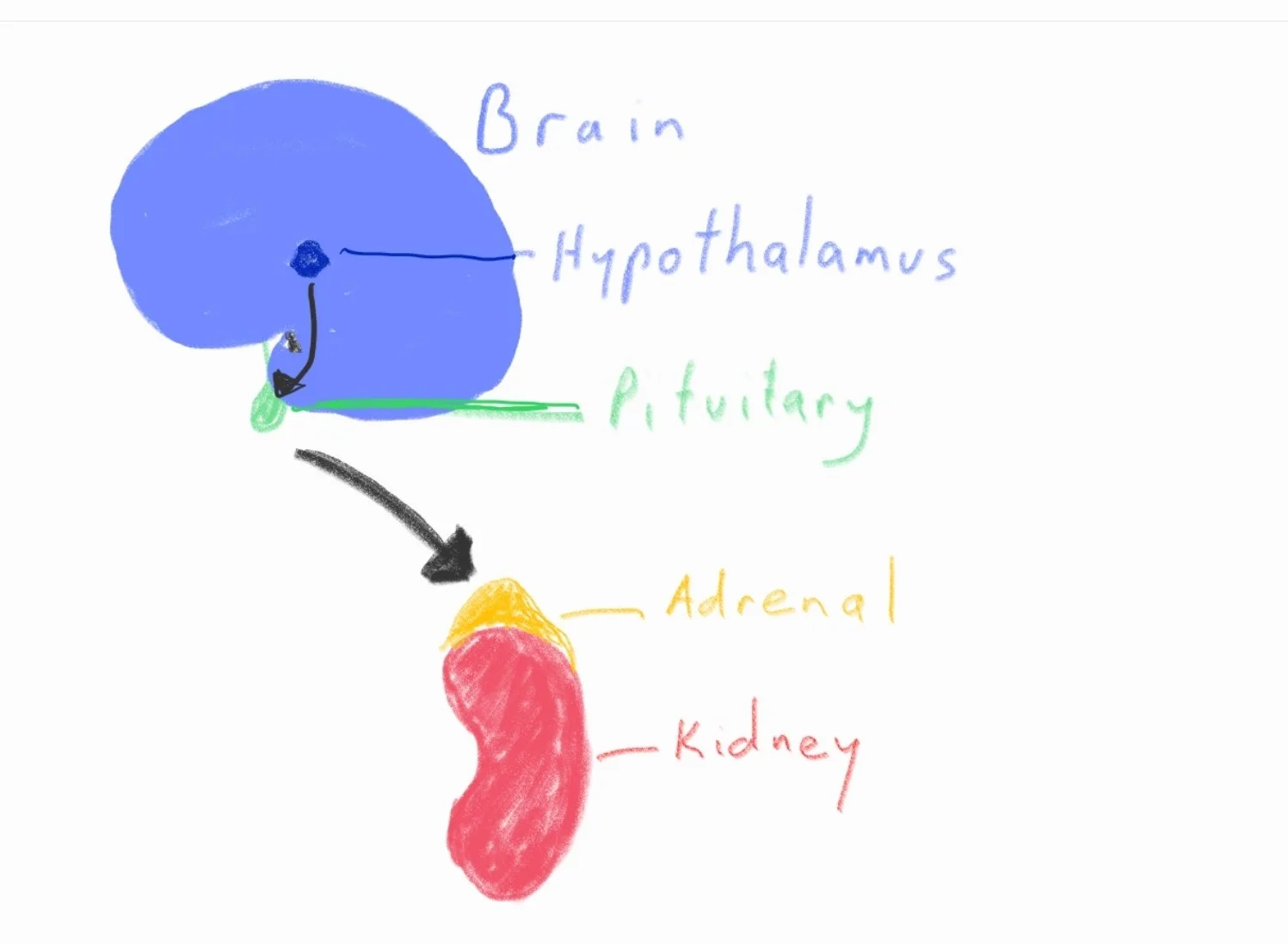How your HPA axis leads to functional symptoms without you being aware
One of the most difficult things to understand is how a symptom can seem to arise out of nowhere. You suddenly experience a pain or nausea or your brain can’t function normally and you don’t know why. You may never have heard of your HPA axis, but it plays a central role in this.
A common example is a panic attack, where unpleasant symptoms suddenly happen out of the blue. A panic attack is a horrible and scary experience.
According to the Victorian Government’s Better Health Channel, symptoms of a panic attack can include the following:
• heightened vigilance for danger and physical symptoms
• anxious and irrational thinking
• a strong feeling of dread, danger or foreboding
• fear of going mad, losing control, or dying
• feeling lightheaded and dizzy
• tingling and chills, particularly in the arms and hands
• trembling or shaking, sweating
• hot flushes
• accelerated heart rate
• a feeling of constriction in the chest
• breathing difficulties, including shortness of breath
• nausea or abdominal distress
• tense muscles
• dry mouth
• feelings of unreality and detachment from the environment.
We have all had some of these symptoms but it’s not unusual for someone having their first full-blown attack to believe they might die.
How can these symptoms occur when you are not doing anything? This unpredictability makes panic attacks even more threatening.
These symptoms develop due to a powerful activation of your HPA. Your HPA or Hypothalamic-Pituitary-Adrenal axis is a main communication channel between your brain and your body, and it operates night and day, without your conscious awareness.
For example, if you are walking along a path and see a snake. Your amazing brain knows what to do to notify the rest of your body of the threat. It automatically sends a message to your hypothalamus, which sends a cascade of neurotransmitters and stress hormones down to the pituitary, a tiny but vital gland on the bottom of your brain. In turn, it sends more stress hormones to your adrenal glands on top of your kidneys, which sets in train a release of yet more stress hormones such as adrenaline and cortisol, and you feel your heart start racing and your muscles tense. You have activated your hypothalamic–pituitary–adrenal (HPA) axis.
Your Hypothalamic -Pituitary- Adrenal Axis
These rush throughout your body to prepare you for the encounter with the snake: your fight or flight reflex is in full swing before you know why.
These stress hormones survival responses are instinctive and automatic. This happens incredibly fast, and you have little control over them.
The hypothalamus is where your conscious and subconscious perceptions of your environment interact with the rest of the brain and your body.
The HPA axis is an amazing survival system, but it can be disrupted. Kirralee’s story which I mentioned in the second post, is a dramatic example of this.
I describe many more symptoms that arise from a disturbed HPA axis in my book, but I want to focus on the factors that could activate your HPA.
“I’m absolutely fine”
The capacity for humans to cope with extremely challenging situations is extraordinary. In part, this is due to the HPA keeping the level of stress hidden from the conscious mind. This ability to push through is admirable on one level, but, to steal a phrase from the brilliant doctor, Bessel Van der Kolk, the body keeps the score. You may be able to manage a stressful situation mentally, but your body is highly attuned to perceive threats of any kind and it keeps you in a state of readiness for attack.
As you will read in Chapter 3, the symptoms of an activated body stress response are vast. They seem unconnected to your immediate situation, but if you take the time to assess all the factors I mentioned in my previous post, you may find that you are living in a state ripe to express symptoms.
An analogy might be a well watered garden is hard to burn, but scorched, dry grass will alight with a single spark on a hot, windy day.
So, it may be helpful to look at everything that can activate your body stress systems, especially your HPA axis, and work to reduce the load upon your system. Over time, you may symptoms will abate.
